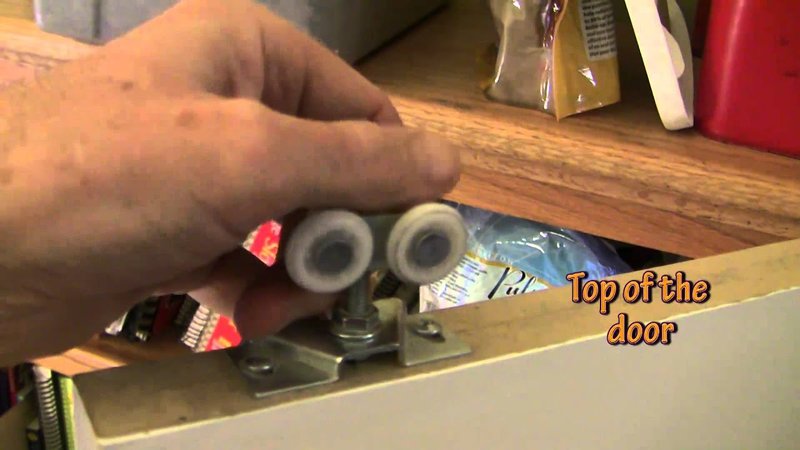
Repairing the pocket door track is an essential skill for any homeowner. Whether you’re facing a door that keeps derailing or a track that’s become bent or dirty, understanding the components around the hardware can make a huge difference. Think of this track as the road your door travels on. If the road is bumpy, your journey won’t be smooth. Let’s dive into the steps you can take to get that pocket door gliding effortlessly again.
Understanding the Pocket Door Track System
Before getting into the nitty-gritty of repairs, it’s crucial to know how the pocket door track system works. The track consists of several parts: the track itself, rollers, and hangers. The track is a metal or plastic strip fixed to the top of the door opening, allowing the door to slide smoothly.
The rollers are what allow the door to glide along the track. If they’re misaligned or damaged, they can cause the door to stall. Then there are the hangers, which hold the door in place and connect it to the rollers. Understanding these elements will help you troubleshoot any issues you might encounter.
If you ever need to replace the track or its components, having a basic understanding will not only save you time but also money. You’ll know exactly what parts to look for at your local hardware store or online.
Identifying Common Problems with Pocket Door Tracks
Like any mechanical system, pocket doors can experience a range of problems. Knowing what to look for can help you pinpoint the issue quickly. Here are some common problems:
- Sticking or Stalling: This can happen if debris gets trapped in the track or if the rollers are worn out.
- Bent Track: An unexpected bump or heavy weight can bend the track, making it impossible for the door to glide smoothly.
- Off-Track Doors: Sometimes, a door can come off its rollers, causing misalignment.
Each of these issues requires a different approach for repair. If your door feels like it’s caught in molasses, you might be dealing with dirt or a worn-out roller. If it looks like it’s leaning, that’s probably a track alignment issue.
Gathering the Right Tools for Repair
Before you start any repair, gather your tools. Having everything in one spot can make the process smoother and quicker. Here’s what you might need:
- Screwdriver: To adjust screws and hardware.
- Level: For ensuring the track is straight.
- Pliers: Useful for pulling tight or bent pieces.
- Replacement parts: Depending on what you find during inspection.
Having the right tools on hand can make your repair much easier. You won’t have to pause midway through to run to the store, which we all know can add extra frustration to the job.
Cleaning the Pocket Door Track
Sometimes, all a pocket door needs is a good cleaning. Dust, dirt, and even pet hair can build up in the track, causing the rollers to snag. Here’s how to give it a thorough cleaning:
1. Start by closing the pocket door completely.
2. Use a vacuum cleaner with a hose attachment to suck out loose debris from the track.
3. Follow up with a damp cloth to wipe down the track and remove any sticky residue.
4. Make sure the rollers are also clean—wiping them down can enhance their performance.
Cleaning the track may solve the sticking issue and increase the longevity of your door. Who doesn’t love a simple fix?
Repairing or Replacing a Bent Track
If your pocket door’s track is bent, it may require some bending back into shape or replacement. Here’s how to approach both options:
Repairing the Track:
– If the bend isn’t severe, you can use pliers to gently bend it back.
– Be cautious not to create new bends in the process.
Replacing the Track:
– If the damage is extensive, replacing it might be the better option.
– Measure the existing track and purchase a matching one from your local hardware store.
– Remove the old track by unscrewing it from the door frame and install the new one, making sure it’s level.
This step can be a bit tricky, but with patience and precision, your door will be back on the track—literally!
Adjusting the Rollers for Smooth Operation
Once the track is fixed, the next step is to ensure the rollers work correctly. Misalignment can make your door feel heavy or cause it to get stuck. Here’s how to adjust them:
1. With the door open, locate the roller adjustment screws.
2. Use your screwdriver to turn the screw to raise or lower the roller.
3. It might take a few tries to get it just right, so be patient.
You might be wondering why this step matters. Well, adjusted rollers can drastically change how smoothly your door operates. It’s often the difference between a frustrating experience and a door that glides effortlessly.
Final Thoughts on Pocket Door Track Repair
Repairing a damaged pocket door track can seem daunting at first, but with a bit of effort and the right approach, you can restore it to working order. Remember to break down the problems, gather your tools, and address each issue methodically.
Whether you’re cleaning the track or replacing a bent one, the goal is the same—to have a door that opens and closes without a hitch. With the right knowledge and tools, you’ll find that maintaining your pocket door track isn’t just doable; it’s completely manageable.
Keep practicing these skills, and soon you’ll feel more confident tackling other home repairs. A little effort can make a world of difference!
